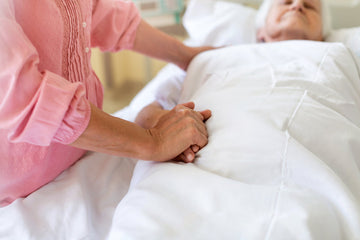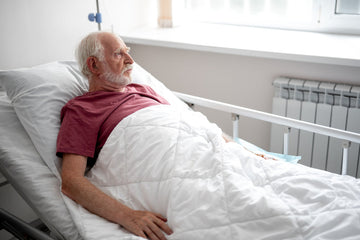
7 Risk Factors That Increase the Chance of Bedsores
Do you have someone at home or in the hospital who is immobilized? Is he or she bedridden or wheelchair-bound?
While you would always like to keep your loved ones healthy and safe, it may not be always possible. The ones who are immobilized are already under stress. You must be under stress too seeing your loved ones immobilized, whether bedridden or wheelchair-bound.
Being a caregiver, you need to be ALERT. Your immobile loved ones will always need special attention. You need to be careful in their care so to ensure they do not develop painful bedsores.
Check out this list of risk factors and ensure that you effectively address these risk factors so that your loved ones do not develop bedsores. Always REMEMBER. The BEST way to treat a bedsore is to prevent bedsore.
Risk factors for bed sores
- A person unable to change position: If a patient is unable to change his position in the bed or wheelchair, the prolonged supply pressure exerted on the skin and underlying tissues will reduce the blood flow and oxygen supply to these tissues. This can lead to the development of bedsores over the pressure areas such as bony prominences.

-
Poor Nutrition & Hydration – A Hidden Risk Factor:
Patients who are compromised nutritionally are at higher risk for the development of pressure ulcers. Protein deficiency must be avoided.
-
Compromised blood flow:
Blood flow to tissues may be compromised in patients with disorders such as peripheral arterial disease and venous insufficiency. -
Neuropathy/compromised sensation:
Patients who are unable to feel pain or pressure sensations are at a higher risk of developing bedsores. Such patients include patients with paralysis, spinal cord injuries, stroke, and neurological disorders such as multiple sclerosis. -
Support surfaces:
The surface upon which the patient lies or sits can profoundly influence pressure over bony prominences, as can lying or sitting in the same position for long periods. Support surfaces should be assessed frequently and adjusted accordingly. -
Pain:
If a patient has too much pain on movement, he may prefer not to make movements and not to change his position. This then increases the risk of the development of bedsores. -
Age:
Very old people may be unable to move and change their position. -
Mental status:
Patients suffering from dementia may be unable to understand the instructions or may fail to recognize the discomfort as a signal to change position. - Incontinence: Incontinence of urine or feces may cause skin damage that can increase the risk of developing pressure ulcers.
- Smokers are at higher risk of developing bedsores.
- The use of rough bed sheets or mattresses that increase friction with the skin may increase the risk of the development of bedsores.
- Absence of use of protectants such as SOREZE: Soreze is a Silicone-based skin protectant bedsore gel that can be applied for the prevention of bedsores. Soreze works by forming a thin, long-lasting, water-repellent, breathable, protective barrier film on the skin that reduces friction and makes skin smooth and facilitates easy repositioning, and prevents bedsores. It is important to use such products to reduce friction with the skin and prevent bedsores.
Read Also, How to Manage Bed Sore?



